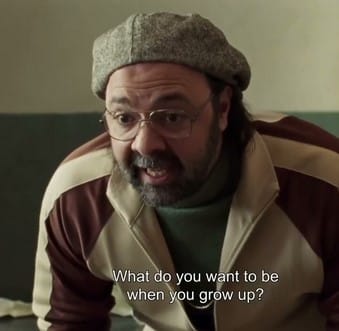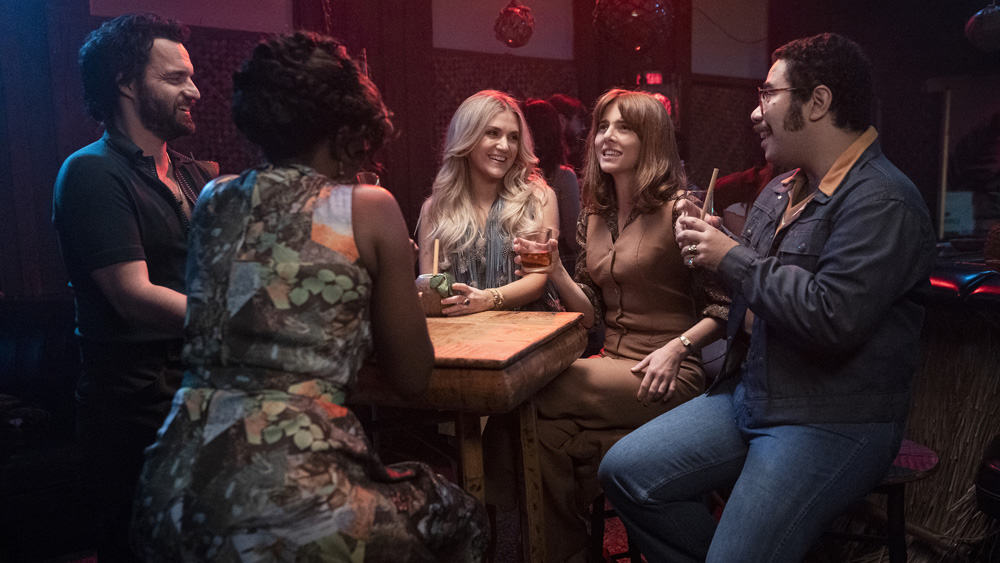Watercooler Pick
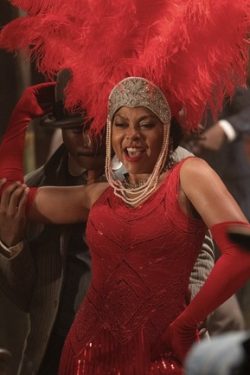
The Color Purple
- Movie
- Where to Find It: Theaters
- Rating: PG-13
- Release Date: December 25th, 2023
Recommended by:
Share on social media
Find More Watercooler Picks
Set in 1920s Georgia and spanning 40 years, The Color Purple musical film reimagines the sweeping story of Celie, an impoverished young Black woman who suffers unspeakable abuse, racism, and sexism, and ultimately triumphs as she finds her way to forgiveness and joy.
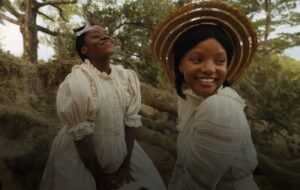 Along with producers including Oprah Winfrey, Steven Spielberg, Quincy Jones, and Scott Sanders, the film brings an all-star cast that includes the Broadway production’s star Fantasia Barrin (Celie) and Danielle Brooks (Sofia), while introducing new talent to the story, including Halle Bailey (Nettie), Taraji P Henson (Shug), Corey Hawkins (Harpo), H.E.R. (Squeak), and Colman Domingo (Mister).
Along with producers including Oprah Winfrey, Steven Spielberg, Quincy Jones, and Scott Sanders, the film brings an all-star cast that includes the Broadway production’s star Fantasia Barrin (Celie) and Danielle Brooks (Sofia), while introducing new talent to the story, including Halle Bailey (Nettie), Taraji P Henson (Shug), Corey Hawkins (Harpo), H.E.R. (Squeak), and Colman Domingo (Mister).
Ghanaian filmmaker Blitz Bazawule directs after creating Beyoncé’s visual album “Black Is King,” with a script from Marcus Gardley, and choreography from Fatima Robinson (Dreamgirls, Mary J. Blige). Expect a few surprise cameos as well.
A cultural touchstone that has represented a turning point in American literature, film, and theater, there’s a reason that the new The Color Purple just became the second biggest Christmas Day movie in history. The revival of Alice Walker’s iconic story has drawn several generations back to movie theaters through vibrant musical that introduces magical realism, new characters, and honest discussions of race, abuse, and sexual orientation that were missing from earlier adaptations. It also adds layers to its chief villain and a redemptive arc.
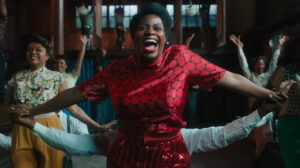
“A revival for joy, a revival for hope, for forgiveness”
“It has been a vehicle for magic and purpose in my life,” Winfrey told Vanity Fair earlier this year. “I don’t know anybody who’s ever been associated with it whose life didn’t get enhanced.”
The film brings new dimensions to the story, adding Celie’s interior life to layers of history and the social undercurrents that shaped her life — and so many others — in the early 20th century American South.
While fans of the novel, the Spielberg directed film, and the musicals will find the characters and the words much as they remember them, the re-imagining departs from its predecessors by opening a wider angled lens on the story. The impact of colonization and how it shaped the early 20th century African American story in the South is part of the more sweeping narrative, and through multiple generations of male characters, we see how each one responds to the violence and the abuse that they witnessed. It’s a response that also acknowledges some of the criticism of earlier adaptations, which came under fire from those who felt that the Black men in the film were portrayed in too harsh a light.
In the musical, a series of dazzling dream sequences take audiences deeper into the mind of Celie, bringing psychological nuances and a psychological sense of empowerment over her own narrative. “The abused are constantly working their way out of it,” the director, Bazawule, explained to the New York Times. “And if we were just in their heads, we will know that they are not just sitting and waiting for a savior. Celie was actively saving herself.”
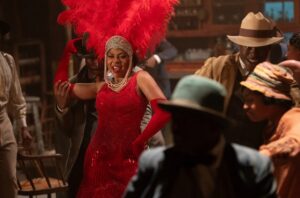 With the blur of fantasy and reality, the electric music and dance sequences make the film feel even more monumental. For a dream sequence that includes Taraji Henson as a chanteuse, the director brought in a 50-piece orchestra and tapped a legendary choreographer, Fatima Robinson, who has worked with performers including Michael Jackson, Mary J. Blige, and Aaliyah. He also sped up some of the songs to match the moves she orchestrated. Drawing from everything from international dance moves to TikTok inspired numbers, Robinson was also tapped to choreograph certain camera moves as they circled the actors.
With the blur of fantasy and reality, the electric music and dance sequences make the film feel even more monumental. For a dream sequence that includes Taraji Henson as a chanteuse, the director brought in a 50-piece orchestra and tapped a legendary choreographer, Fatima Robinson, who has worked with performers including Michael Jackson, Mary J. Blige, and Aaliyah. He also sped up some of the songs to match the moves she orchestrated. Drawing from everything from international dance moves to TikTok inspired numbers, Robinson was also tapped to choreograph certain camera moves as they circled the actors.
A Culmination of 40 Years: The Sprawling Life of a Seminal Novel
The novelist Alice Walker, who was the daughter of sharecroppers, published The Color Purple in 1982, and became the first black woman to win both the National Book Award and the Pulitzer Prize. In 1985, Steven Spielberg directed the first film adaptation of the novel, which introduced the wider world to both Whoopi Goldberg and Oprah Winfrey as it earned 11 Academy Award nominations, including Best Picture, Best Original Score, and acting nominations for Goldberg, Winfrey, and costar Margaret Avery.
Oprah would name her production company after one of the characters, Harpo, and Beyoncé quoted the movie in the liner notes of her first solo album.
Two decades later, The Color Purple musical first premiered on Broadway in 2005, earning 11 Tony nominations. In 2007, American Idol winner Fantasia Taylor took on the role of Celie — a role she reprises in the film. Winfrey, who was a producer on the musical, decided to recast her for her ability to capture the “rawness and vulnerability” of the role.
More recently, the Broadway production was revived in 2016, earning more Tony nods and wins, including Best Revival of a Musical and Best Actress for Cynthia Erivo.
“The cultural touchstone for Black women in America”
 Thirty years after the Spielberg-directed film was released, writer Victoria Bond explained in the New Republic how the original film helped “empower its audience by unburdening us of pathos and cultural shame,” and in doing so, it came to represent self love for Black women.
Thirty years after the Spielberg-directed film was released, writer Victoria Bond explained in the New Republic how the original film helped “empower its audience by unburdening us of pathos and cultural shame,” and in doing so, it came to represent self love for Black women.
Over forty years since the novel was published and a century since Celie’s story begins, the film sets out to connect with younger generations while bringing back fans of the previous film and stage productions.
Adrianna Hicks, who played Celie in the Broadway production, captured the enduring resonance of the story in an interview with the Huffington Post. “It deals with every single thing that each and every individual goes through…It doesn’t matter what creed, what religion, what race you are, what sex you are, it doesn’t matter because it touches on every single thing that the human race goes through, whether it’s insecurities, or not feeling that you’re good enough, or trying to feel power in the sense of yourself and knowing that God is inside of you and He’s all around.”
Go Deeper
The Banning of the Novel — At an unprecedented time of book banning across the U.S., National Geographic looks at how one of the most beloved novels found itself in the crosshairs.
A Healing that Crosses Generations — The resonance of the novel for different generations was captured by Salamishah Tillet in her 2021 book In Search of The Color Purple. She talks to PBS station WHYY about the lessons it imparts and her interviews with Alice Walker.
A Reinvention that Answers to Detractors — Director Blitz Bazawule sheds light on how the big screen adaptation addresses some of the criticism of the previous incarnations of the story while remaining faithful to its fanbase in his interview with the New York Times.
A soaring, historically relevant epic that echoes the many struggles for human rights throughout the mid 20th century, The Color Purple‘s musical film has delivered an event — one that brings a sweeping, larger than life reinvention to a revered classic that has shaped three generations.
With a PG rating and an uplifting message, bring your family to see it. Or take anyone struggling and in need of hope.
Where to Watch It:
Order your tickets in advance to get your preferred theater, dates, and seats.
The director Bazawule started his career as a painter and became a hip-hop performer (he records as Blitz the Ambassador).
- Moods: grip me, inspire me, transfix me, tug my heartstrings
- Interests: acclaimed and award winning, coming of age, conversation worthy, epic, fresh perspectives


